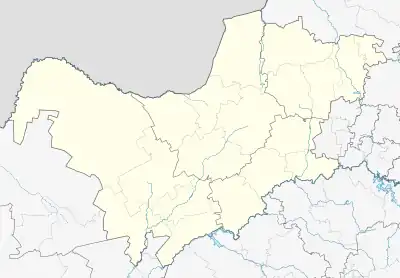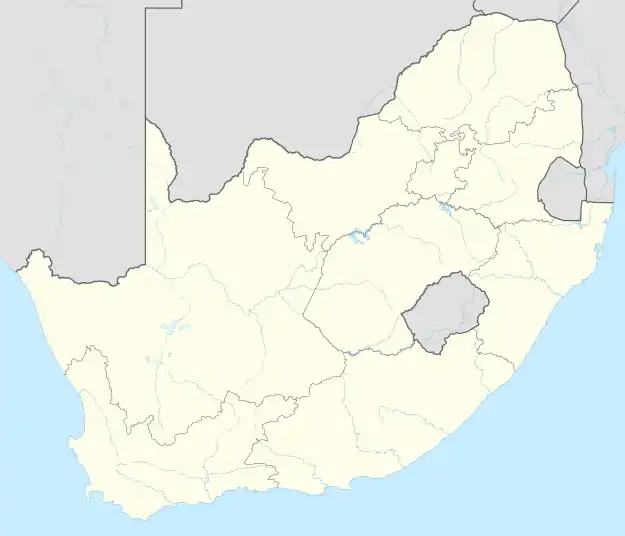Saulspoort | |
|---|---|
 Saulspoort  Saulspoort | |
| Coordinates: 25°09′29″S 27°09′43″E / 25.158°S 27.162°E | |
| Country | South Africa |
| Province | North West |
| District | Bojanala |
| Municipality | Moses Kotane |
| Area | |
| • Total | 14.76 km2 (5.70 sq mi) |
| Population (2011)[1] | |
| • Total | 11,220 |
| • Density | 760/km2 (2,000/sq mi) |
| Racial makeup (2011) | |
| • Black African | 99.5% |
| • Coloured | 0.1% |
| • Indian/Asian | 0.1% |
| • Other | 0.3% |
| First languages (2011) | |
| • Tswana | 86.4% |
| • English | 3.3% |
| • Zulu | 2.1% |
| • S. Ndebele | 1.5% |
| • Other | 6.8% |
| Time zone | UTC+2 (SAST) |
| Postal code (street) | 0318 |
| PO box | 0318 |
Saulspoort (also known as Moruleng)[2] is a village at the northern foot of the Pilanesberg, about 65 km north of Rustenburg. It was named after a former baKgatla chief, Tsheole, called Saul by the early settlers.[3]
It was established when Henri Gonin, a Swiss missionary with the Dutch Reformed Church preaching to the baKgatla tribe, moved to Saulspoort farm, which was owned by the later president Paul Kruger; Kruger eventually sold the farm to Gonin in 1869.[4] In 1895 the baKgatla purchased most of Saulspoort from Gonin.[5]
References
- 1 2 3 4 "Main Place Saulspoort". Census 2011.
- ↑ "Pilane and Another v Pheto and Others". Southern African Legal Information Institute.
Moruleng and Saulspoort mean the same village and the names are frequently used interchangeably…
- ↑ Raper, Peter E. (1987). Dictionary of Southern African Place Names. Internet Archive. p. 399. Retrieved 28 August 2013.
- ↑ Daniel J. Theron (31 March 2014). Faith, Hope and Determination. Author House. p. 68. ISBN 978-1-4918-3105-2.
- ↑ "The Missionary as Land Broker". Africana Periodical Literature bibliographic database. Retrieved 29 August 2014.
This article is issued from Wikipedia. The text is licensed under Creative Commons - Attribution - Sharealike. Additional terms may apply for the media files.
.svg.png.webp)